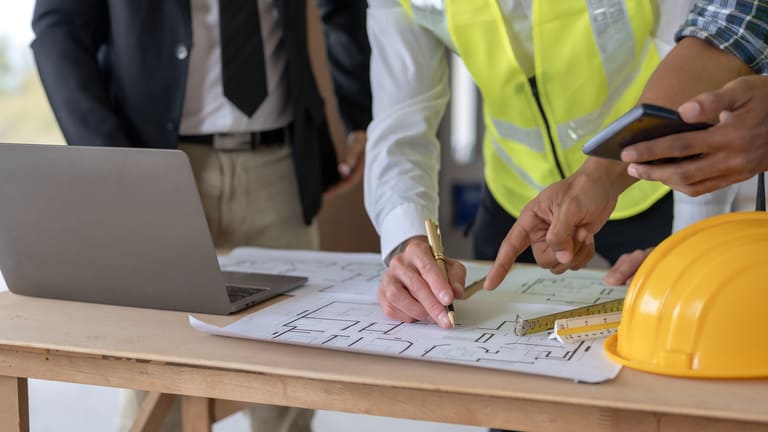

Taiyo Kogyo Column
Be careful of legal violations (illegal construction) when adding a warehouse! Explanation of basic precautions

When an existing factory or warehouse becomes too small due to business expansion or an increase in the number of goods to be stored, you may consider adding a warehouse, but it is important to understand the Building Standard Law and Urban Planning Law because you are not free to expand as you wish.
To avoid unintentional illegal construction, this article explains the minimum points you should keep in mind.
Of course, we recommend that you feel free to consult a professional during the actual expansion.
Minimum points to keep in mind and outline when considering warehouse expansion

The Building Standard Law and the Urban Planning Law are the laws and regulations that will be closely related to the expansion of warehouses.
We do not provide a detailed explanation of the laws and regulations here, but we will focus on the main important points and explain them in order.
*The information below is a summary of key points as of August 2023. When actually adding a warehouse, please be sure to check the latest laws and regulations or consult with a professional such as a construction company or warehouse sales business.
Illegal Building Cases: Building Coverage
The “building-to-land ratio” refers to the ratio of the current building area to the site area, whether or not it is already full, and whether or not it will be exceeded by further warehouse additions.
One important point when considering the building-to-land ratio is that, for example, in the case of a building with two or more floors, “the area of the floor with the largest area is considered. It should be noted that the area of the first floor is not necessarily the standard.
The building-to-land ratio is calculated by dividing the building area by the site area, and then multiplying the result by 100.
The allowable building-to-land ratio varies from area to area (city to city).
For example, if the area has a building-to-land ratio of 50%, then a building of up to 50 square meters per 100 square meters of site area can be constructed on the land.
Illegal Building Cases: Floor Area Ratio
Floor-area ratio” refers to whether the current ratio of total floor space to site area is full, or whether it will be exceeded by additional warehouse space.
The total floor area is the sum of the floor areas of all floors of a building. It can also be expressed as the size of the building’s living space.
The floor-area ratio is calculated by dividing the total floor area by the site area x 100.
The floor-area ratio also differs from area to area (municipality to municipality). In some cases, such as when the width of the road in front of the building is narrow, further restrictions may be placed on the floor area ratio.
Illegal Building Cases: Absolute Height Limit
The height of buildings is also defined by region, and this restriction is called the “absolute height limit.
For example, absolute height restrictions are stricter in areas designated as “low-rise residential areas.
Cases of illegal construction: Diagonal restrictions
This is also a restriction on building height.
Diagonal restrictions are designed to ensure a certain level of lighting and ventilation in the street and adjacent areas, and to reduce the oppressive feeling caused by tall buildings.
Diagonal restrictions are divided into three categories, such as “diagonal restrictions to roads,” “diagonal restrictions to adjacent land,” and “diagonal restrictions to the north,” and the height of buildings is restricted for each of these categories.
Also understand "preexisting nonconforming."
It is important to understand the situation of “existing nonconformity” along with the conditions for illegal construction that we have discussed.
Existing non-conforming” simply means that the building was in a legal condition at the time it was built, but subsequent changes in the law have rendered it non-conforming.
The Building Standard Law and City Planning Law, which relate to building area, floor area, and height, may be adjusted in accordance with the times.
For example, even if you are aware that your current building complies with the law and that you can still afford to add on to it, you need to check the latest details of each law and regulation before actually adding on to it.
Submit applications to local authorities in cases where building permits are required.
Even if the building complies with the legal requirements as described above, it is not free to expand the building beyond a certain size, and an application for building permit may be required to be submitted to the local government or inspection agency.
For example, for buildings defined as “special buildings” in Article 6 of the Building Standards Law, such as warehouses, factories, gymnasiums, amusement centers, and apartment buildings, an application for building permit is required if the total floor area of the building to be expanded is 200 m2 or more.
The application method and fees vary from municipality to municipality, but as an example for your reference, in the case of the Tokyo Metropolitan Government, you can check and download the application form from the website of the Bureau of Urban Development of the Tokyo Metropolitan Government. For example, a fee of 19,000 yen is charged for a building with a floor space of 200 to 500 square meters.
For details, please check the website of each municipality.
▼The Building Standard Law and the Urban Planning Law can be found at the following website operated by the Digital Agency.
e-Gov Law Search “Building Standard Law
https://elaws.e-gov.go.jp/document?lawid=325AC0000000201
e-Gov Laws and Regulations Search “City Planning Law
https://elaws.e-gov.go.jp/document?lawid=343AC0000000100
When expanding a warehouse, feel free to consult with a professional with a wealth of experience.
This article has excerpted some of the key points to avoid illegal construction, which are important when expanding various facilities, including warehouse expansions.
When actually adding a warehouse, for example, it is necessary to check the latest status of each law and regulation pertaining to the relevant area.
Taiyo Kogyo also provides building permit application services on behalf of its customers when they purchase its products.
Please feel free to contact Taiyo Kogyo even if you are expanding or building a new warehouse while you are unable to fully grasp detailed information or are too busy to apply for a new warehouse. We will be happy to work closely with you.
▼ Click here for a list of products and services of Taiyo Kogyo Co.
https://www.tentsouko.com/
Tent Warehouseへの
Contact us

What you need to know when building a warehouse
We packed it all in.
Clues to solving the 2024 problem
Recommended for
I don't know where to start in building a warehouse.
I want to build a warehouse in an economical way.
Which type of warehouse should we build?
I want to learn the basics of warehouse construction anyway.
I'm concerned about the 2024 problem, but I don't know what to do about it.
Related Articles
- TOP>
- Taiyo Kogyo Column>
- Be careful of legal violations (illegal construction) when adding a warehouse! Explanation of basic precautions








